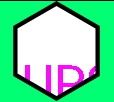- Forum-Beiträge: 7
07.04.2021, 12:21:05 via Website
07.04.2021 12:21:05 via Website
Ich habe jetzt durch Hilfe von Jokel meine erste Frage gelöst. Bloß ist mir beim herum experimentieren mit dem gewonnenen Kenntnissen draufgekommen, das ich gerne mein 6-Eck mit einer schwarzen Außenlinie zeichnen will. Ich habe es probiert und auch eine Möglichkeit gefunden. Bloß wenn ich das mache dann färbt sich der ganze Canvas in diese Farbe. Ich möchte aber das es Transparent die anderen darunterliegenden Objekte anzeigt.
Falls ihr die Bilder sehen wollt, einfach https:// hinzufügen. Kann leider noch keine Links hochladen
So schaut es aus wenn ich meine maskColor anwende.

So schau es aus wenn ich es mit Color.TRANSPARENT fülle

Aber wie ich schon gesagt habe ich möchte das die leiste bleibt, so wie beim 1 Bild und der Hintergrund mein originales canvas ist.
Das ist der code zum Zeichnen für das oberste Bild.
public void draw(Canvas c){
c.clipPath(hexagonBorderPath, Region.Op.DIFFERENCE);
c.drawColor(Color.BLACK);
c.save();
c.clipPath(hexagonPath, Region.Op.DIFFERENCE);
c.drawColor(maskColor);
c.save();
}
Das ist der code zum Zeichnen für das unterste Bild.
public void draw(Canvas c){
c.clipPath(hexagonBorderPath, Region.Op.DIFFERENCE);
c.drawColor(Color.BLACK);
c.save();
c.clipPath(hexagonPath, Region.Op.DIFFERENCE);
c.drawColor(Color.TRANSPARENT);
c.save();
}
Ich habe nichts geändert bis auf die Farbe. Hat jemand dafür eine andere Lösung als das einfach als erstes aufs canvas zu malen?
— geändert am 07.04.2021, 18:57:26 durch Moderator

Empfohlener redaktioneller Inhalt
Mit Deiner Zustimmung wird hier ein externer Inhalt geladen.
Mit Klick auf den oben stehenden Button erklärst Du Dich damit einverstanden, dass Dir externe Inhalte angezeigt werden dürfen. Dabei können personenbezogene Daten an Drittanbieter übermittelt werden. Mehr Infos dazu findest Du in unserer Datenschutzerklärung.